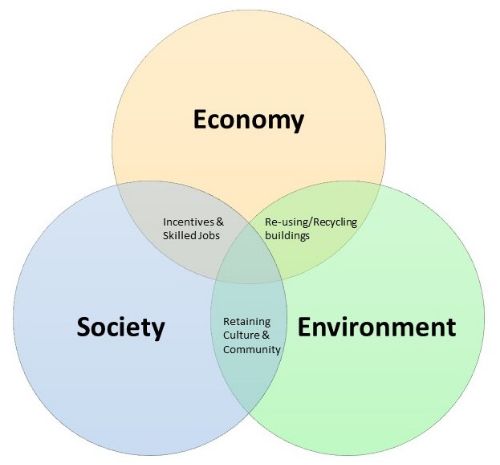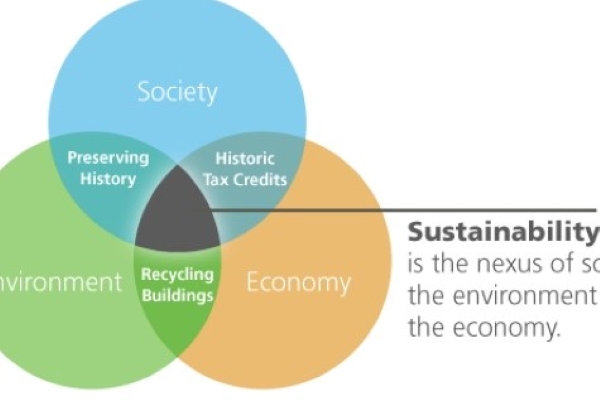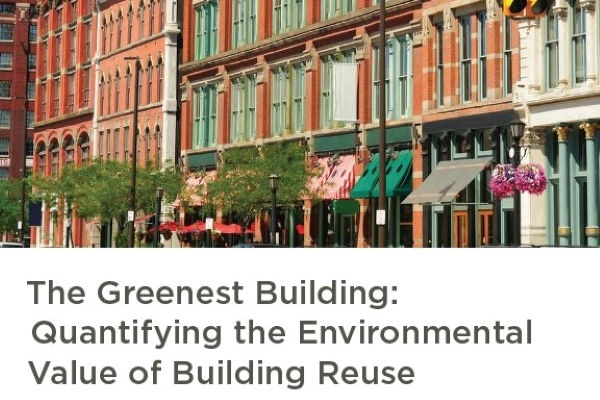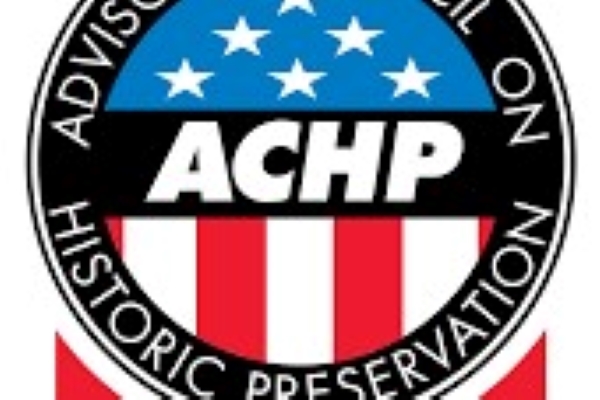Historic Preservation & Sustainability#

Historic preservation is at the core of a sustainable community development strategy. Preserving historic buildings retains community fabric, helping people feel connected to places that represent authentic connections to space and culture. Reinvesting in historic buildings promotes growth in skilled construction trades, provides critical incubation space for small businesses, stabilizes property values, and especially for pre-1950 developments, retains more financially-sustainable land use patterns. Reusing historic buildings keeps building materials out of landfills, captures the embodied energy of already constructed buildings, and allows older buildings to capture their built-in energy efficiencies.
Good for the Community – Preserving historic resources allows property owners to act not only as owners but as stewards of history who are keeping alive the connections of a community with its own past and culture. Keeping historic buildings as part of a community's fabric helps build a sense of unique identity and place, and more strongly encourages people to share and care for the spaces around them.
Good for the Environment – Reusing historic buildings means reusing the largest consumer product we buy. Old buildings represent massive investments in natural resources and energy (known as "embodied energy") and reusing them keeps useful, often high-quality materials out of landfills and reduces the significant carbon emissions involved with new construction. Many old buildings have inherent energy efficiencies built into their design and can also score well in energy efficiency programs like the U.S. Green Building Council's LEED Program.
Good for the Economy – Investing in historic buildings generally strengthens and improves local economies. Historic districts often experience stabilized housing markets, usually retaining more value during downturns and recovering more quickly. Preservation projects often employ local contractors familiar with the buildings and their unique materials, recirculating money into the local economy and promoting job growth in skilled building trades like carpentry and masonry. Incentives are also available for historic resources in Fort Collins, including grants, loans, and tax credits.
Resources for Sustainability & Historic Buildings#

National Park Service
The National Park Service keeps the national best-practice guidance for preserving historic buildings, known as the Secretary of the Interior's Standards for Treatment of Historic Properties. This includes guidance on how to improve the energy efficiency of historic buildings, protect against the effects of climate change, and install new technology on historic buildings like solar panels and green roofs.

National Trust for Historic Preservation - Research & Policy Lab
The National Trust has invested a significant amount of research in determining the best, most cost effective ways to "green" historic buildings. Formerly known as the Preservation Green Lab, the Research & Policy Lab continues this important work with up-to-date publications, including this study on the cost-effectiveness of window replacements.

Advisory Council for Historic Preservation
The ACHP is an independent federal agency that oversees the nation's historic preservation program. It includes resources and research regarding the connection between historic preservation, sustainability, and climate resilience.